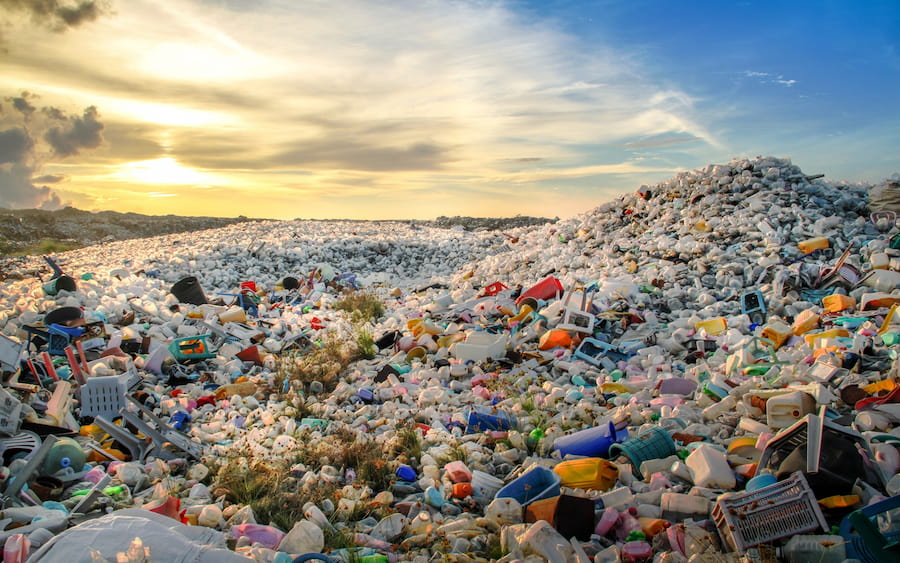The invasion of plastic waste into our ecosystems is a concern that has been escalating over the years. While the images of plastic-strewn beaches and choked marine life are apparent, the invisible impact of plastic pollution on the atmosphere often goes unnoticed. This article unravels the intricate relationship between plastic pollution and atmospheric degradation, shedding light on a problematic yet understudied aspect of the plastic crisis. Additionally, it hints at proactive measures such as the utilization of small skips for hire for responsible waste management, which can play a pivotal role in mitigating the harmful effects of plastic pollution.
Plastic Production and Emissions:
The journey of plastic begins in the oil and gas fields, as fossil fuels are the primary raw materials for plastic production. The process of extracting, refining, and processing these materials into plastic is energy-intensive. It releases a significant amount of greenhouse gasses (GHGs), such as (CO2) and methane (CH4), into the atmosphere.
Incineration:
Incinerating plastic waste is a common practice to reduce the volume of waste, but it comes with a hefty environmental price. The combustion process releases CO2, along with toxic pollutants like dioxins, furans, mercury, and polychlorinated biphenyls, into the atmosphere, which have detrimental effects on both the environment and human health.
Degradation and Microplastics:
Plastic doesn’t biodegrade; instead, it photodegrades, breaking down into smaller pieces over time when exposed to sunlight. This process releases GHGs like methane and ethylene, which are more potent in trapping heat in the atmosphere compared to CO2. Additionally, the microplastics resulting from degradation pose threats to marine life and can affect the atmospheric carbon sequestration process.
Leaching:
Plastics are among the most commonly utilized things in the globe due to their durability, versatility, and low cost. However, many plastics contain harmful additives like phthalates and Bisphenol A (BPA), which can have adverse effects on human health and the environment.
When these plastics are exposed to sunlight, rain, and temperature fluctuations, the harmful chemicals can leach out and contaminate the surrounding environment. This can lead to chemical interactions between the leached substances and atmospheric components, resulting in the formation of hazardous secondary pollutants. Therefore, it is important to properly dispose of plastics and limit our use of them whenever possible to reduce the risk of harm to both human health and the environment.
Indirect Emissions:
Plastic pollution has a far-reaching impact on the environment, which goes beyond its visible effects. Apart from harming marine life, plastic waste also indirectly contributes to atmospheric degradation. When plastic waste ends up in water bodies, it can lead to the growth of algal blooms, which release volatile organic compounds. These compounds can deliver a powerful effect on the atmospheric composition, leading to air pollution and climate change. Therefore, tackling plastic pollution is crucial to protecting not just our oceans but also our planet as a whole.
Carbon Black and Soot:
Plastic waste, when subjected to intentional burning or wildfires, undergoes a process that results in the formation of carbon black, a component of soot. Soot particles can absorb sunlight, which contributes to atmospheric warming. Additionally, when these particles settle on snow or ice, they can darken the surface and accelerate melting due to the increased absorption of sunlight. This highlights the importance of proper disposal of plastic waste and the need to take urgent action to reduce plastic pollution.
Effects on Marine Ecosystems:
Marine ecosystems are crucial to our planet’s health as they help absorb carbon dioxide from the atmosphere. This process, known as carbon sequestration, plays an important part in mitigating the impacts of climate change. Unfortunately, plastic pollution in oceans and seas poses a severe threat to marine life and the natural processes that aid in maintaining the atmospheric balance.
As plastic waste accumulates in the ocean, it can harm or even kill marine animals, disrupt food chains, and ultimately impact the entire ecosystem. Additionally, the breakdown of plastic waste can release harmful chemicals into the water, further exacerbating the problem. Therefore, it is essential to take action to reduce plastic pollution and protect our marine ecosystems.
Policy Implications:
Plastic pollution poses a considerable hazard to the atmosphere, and it is crucial to address its atmospheric impact through effective policies. One way to achieve this is by implementing stricter regulations on plastic production, which can help to lower the quantity of plastic scrap generated. Additionally, promoting recycling and circular economy models can also help to mitigate the atmospheric consequences of plastic pollution. Through these efforts, we can work towards a cleaner, healthier planet for everyone.
Conclusion:
Plastic pollution is a critical problem that has far-reaching consequences beyond what meets the eye. It not only harms marine life and pollutes our oceans, but it also has a significant influence on the climate and the weather crisis. The atmospheric repercussions of plastic pollution are often overlooked, but they are just as crucial as any other aspect of this problem. The emissions from plastic production and disposal contribute to greenhouse gas emissions, which exacerbate the climate crisis.
Moreover, microplastics and other airborne pollutants from plastic waste can travel long distances, affecting air quality and potentially harming human health. A comprehensive understanding of these impacts is necessary to develop proactive measures to curb plastic pollution. By reducing plastic waste and encouraging endurable practices, we can protect both atmospheric integrity and global ecosystems.
Also read these articles:
Skip Bins in Logan: Your Gateway to Waste Management Bliss
TOP AC DUCT CLEANING COMPANY Service in Dubai
Why Solar Energy is the Best Solution for Pakistan?


